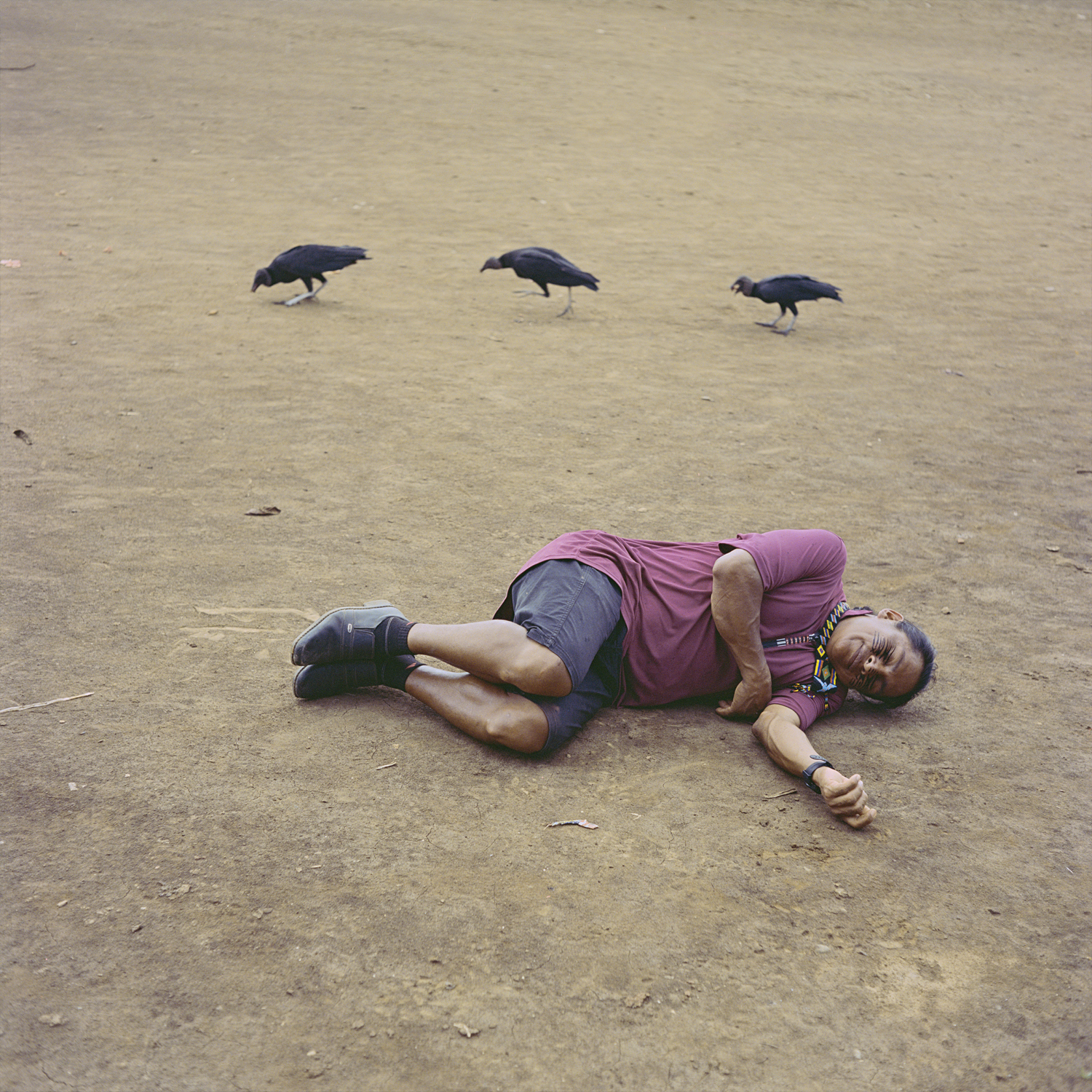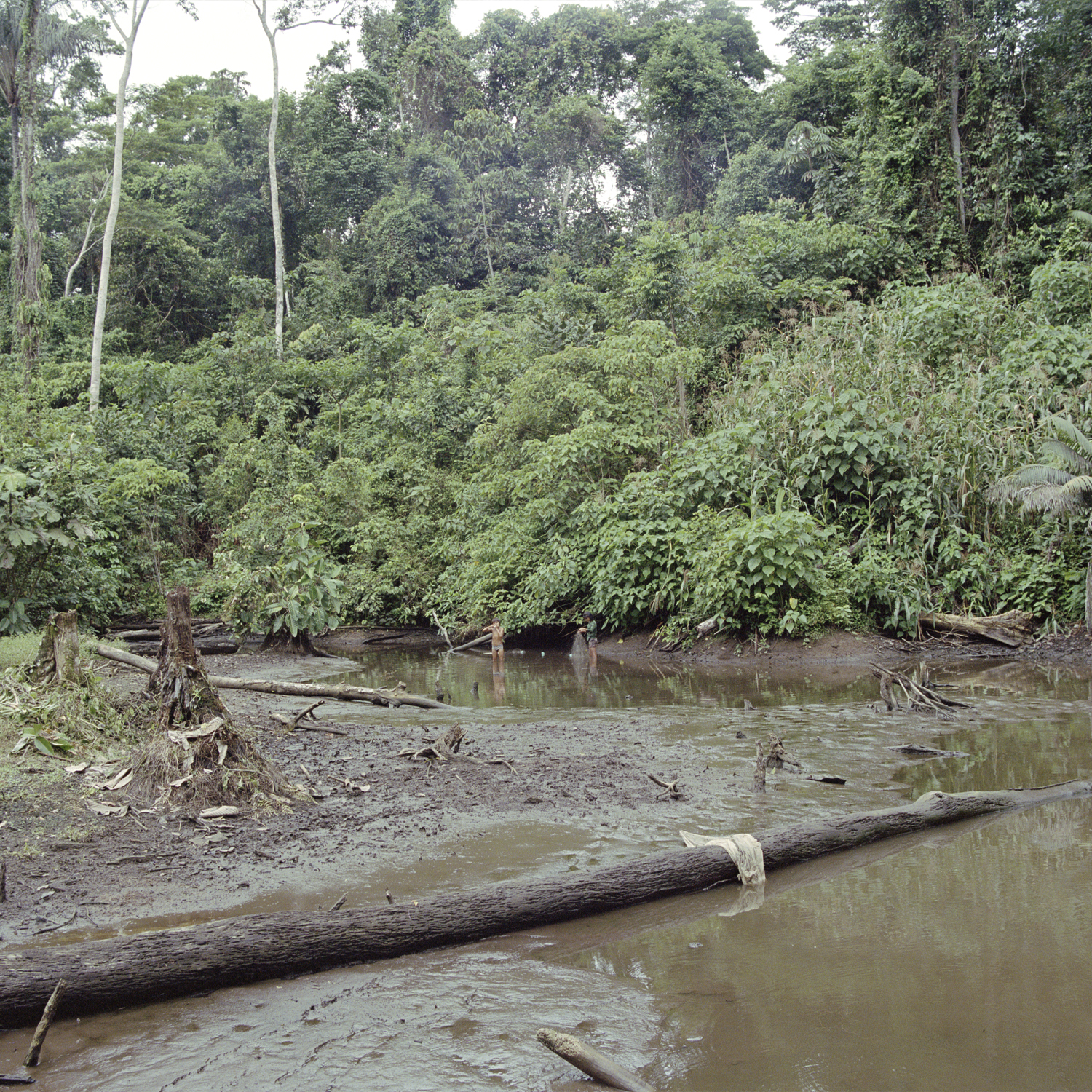














Once upon a time in the jungle
(2023 - ongoing)
[ENG]
‘Once upon a time in the Jungle’ develops a story where the imaginary of the western resonates with the concept of the Amazon myth of the 19th century, when the Amazon jungle was considered a wasteland, full of resources to be extracted and the people who lived in its territories were completely erased.
This project speculates about the different problems of the jungle. The ‘western’ resonates with the latent and colonial violence, the traces left by evangelization, the disputed territory, the notion of game and the internal dynamics of the jungle. From the everyday life of the southern Ecuadorian Amazon jungle, young rappers, soldiers, leaders, elders, families and children from Amazonian communities intermingle and participate in front of the lens to act and play cowboys like in their childhood. The characters portrayed, however, move away from western archetypes; sometimes we don't know who is the bad guy and who is the good guy. We cannot verify a single reading and, despite being so far from the ‘American West’, all the subjects locate references to the western with images and gestures of their own, which allows us to revitalize and reincorporate those codes to transpose them to their immediate reality.
This project attempts to feel and reimagine a western jungle to create new imaginary registers and open realism, alluding to other visual ways of experiencing this territory from and with its own inhabitants. Drawing lines between two worlds, moving away from any iconic, exoticizing or ethnographic look. This Amazonian Far West can be read as an internal struggle between two ways of life: the ancestral and the communitarian, which dialogues, voluntarily or imposed, with the advantages and threats of the Western world.
[ESP]
‘Once Upon a Time in the Jungle’ desarrolla una historia en la cual el imaginario del ‘Western Americano’ resuena con el concepto del mito amazónico del siglo XIX, cuando la selva amazónica se consideraba un erial, lleno de recursos por extraer y los pueblos que vivían en estos territorios eran completamente borrados.
Este proyecto es un ejercicio especulativo sobre los diferentes problemas de la selva amazonica en la actualidad. El concepto de ‘Western’ resuena con la violencia latente y colonial, las huellas dejadas por la evangelización, el territorio en disputa, la noción de juego y las dinámicas identitarias de la selva. Desde la cotidianidad de la selva amazónica del sur de Ecuador, jóvenes raperos, soldados, líderes, ancianos, familias y niños de comunidades amazónicas se entremezclan y participan frente a la camara para actuar y jugar a los vaqueros como en la infancia. Los personajes retratados se alejan de los arquetipos del western convencional, no sabemos quién es el malo y quién el bueno, no podemos verificar una sola y única lectura.
Este proyecto trata de sentir y reimaginar una jungla occidental para crear nuevos registros imaginarios y de realismo abierto, aludiendo a otras formas visuales de experimentar este territorio desde y con sus propios habitantes. Trazar líneas entre dos mundos, alejándose de cualquier mirada icónica, exotizante o etnográfica. Este Far West amazónico puede leerse como una lucha interna entre dos formas de vida: la ancestral y la comunitaria, un dialogo voluntario o impuesto con las ventajas y amenazas del mundo occidental.